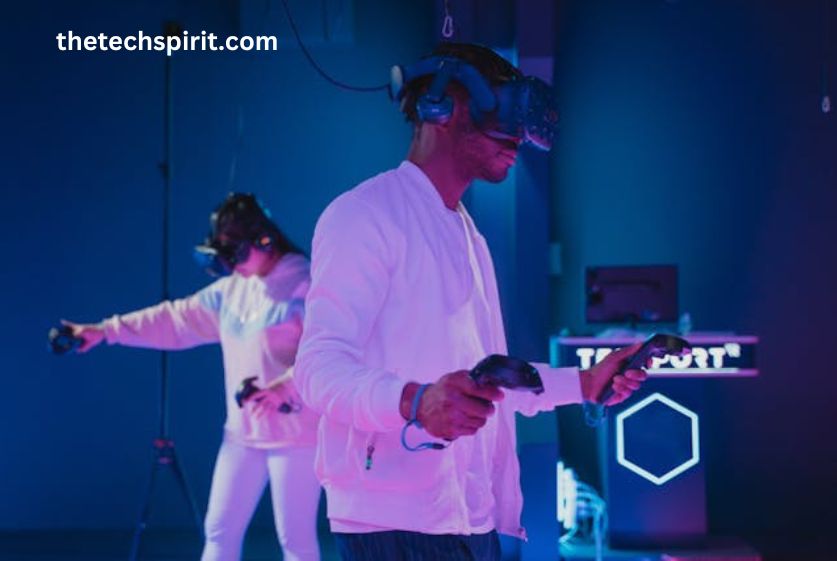The integration of Artificial Intelligence Augmented Reality (AR) is paving the way for an entirely new era of enveloping experiences. Artificial Intelligence, with its ability to process vast amounts of data and make intelligent decisions, has become an indispensable tool in various industries.
Augmented Reality, on the other hand, has revolutionized the way we interact with the digital world by seamlessly blending virtual elements with our real-world surroundings. The convergence of these two powerful technologies has opened up a field of possibilities, promising to transform the way we perceive and engage with our environment.
Artificial Intelligence, often referred to as the simulation of human intelligence by machines, encompasses a wide range of capabilities, including machine learning, natural language processing, computer vision, and decision-making. Augmented Reality, on the other hand, is a technology that overlays digital information onto the physical world, enhancing our perception and understanding of our surroundings.
By combining these two cutting-edge technologies, we can create enveloping experiences that blur the lines between the virtual and the real, offering unprecedented opportunities for entertainment, education, healthcare, and beyond.
Table of Contents
The Evolution of Augmented Reality
Early Days of Augmented Reality
The concept of Augmented Reality has been around for decades, with early prototypes and experiments dating back to the 1960s. It wasn’t until the late 1990s and early 2000s that AR gained significant attention and started to become more practical. Early AR systems were bulky, expensive, and often confined to specialized environments, such as research labs and military applications.

Rise of Mobile Augmented Reality
The advent of powerful mobile devices and advancements in computer vision and sensor technologies paved the way for the widespread adoption of Augmented Reality. The introduction of smartphones and tablets with built-in cameras, GPS, and other sensors enabled developers to create AR applications that could overlay digital content onto the real world through the device’s screen.
This democratization of AR technology opened up new possibilities for consumer-facing applications, ranging from gaming and entertainment to navigation and retail.
Advancements in AR Hardware and Software
Over the years, Augmented Reality hardware and software have continued to evolve, enabling more sophisticated and immersive experiences. Head-mounted displays (HMDs), such as Microsoft HoloLens and Magic Leap One, have brought AR into the field of Mixed Reality, allowing users to interact with virtual objects more naturally and intuitively.
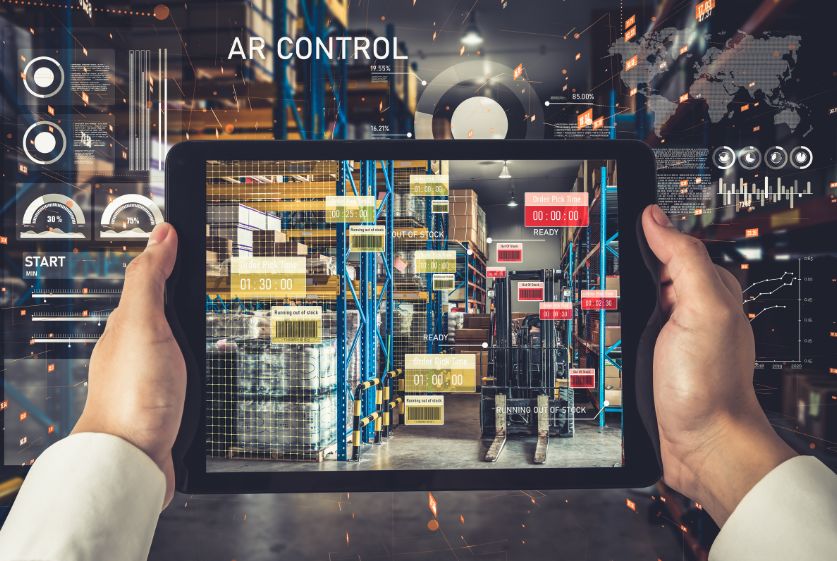
The development of powerful AR software development kits (SDKs) and platforms, like AR Core by Google and AR Kit by Apple, has made it easier for developers to create high-quality AR applications for various platforms.
The Role of Artificial Intelligence in Augmented Reality
While Augmented Reality provides a powerful way to overlay digital content onto the real world, Artificial Intelligence plays a crucial role in making these experiences truly intelligent, interactive, and contextually aware.
Computer Vision and Object Recognition
One of the key applications of Artificial Intelligence in Augmented Reality is computer vision and object recognition. By leveraging machine learning algorithms, AR systems can accurately identify and track real-world objects, enabling seamless integration of virtual elements with the physical environment.
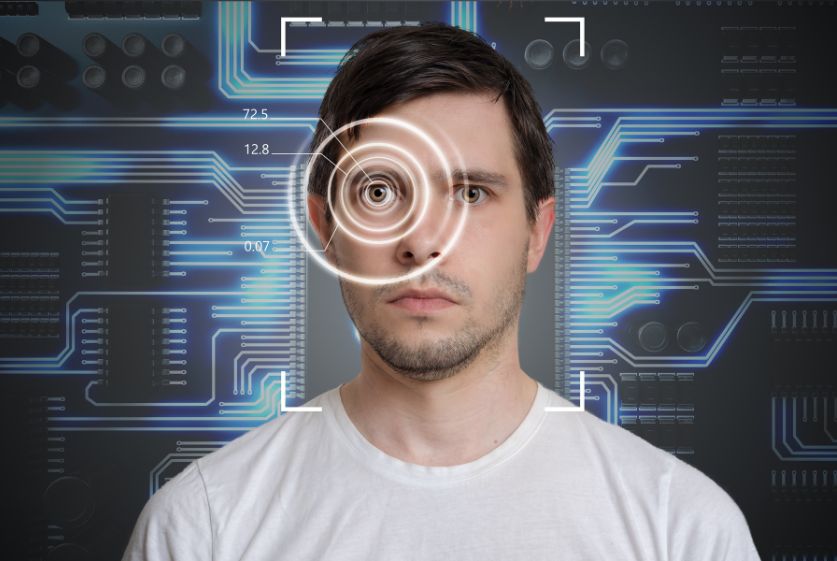
This technology is essential for applications such as furniture placement, product visualization, and interactive gaming experiences.
Natural Language Processing
Natural Language Processing (NLP) is another area where AI brings significant value to AR experiences. NLP enables AR systems to understand and interpret human language, allowing users to interact with virtual objects and interfaces using voice commands or text input. This capability opens up new possibilities for hands-free interactions and makes Augmented Reality experiences more accessible and user-friendly.
Machine Learning and Deep Learning
Machine learning and deep learning algorithms play a crucial role in enhancing the intelligence and adaptability of Augmented Reality systems. By analyzing vast amounts of data, these algorithms can learn patterns, make predictions, and adapt to user preferences and behaviors. This enables AR applications to provide personalized and contextually relevant experiences, making them more engaging and effective.
Applications of Gaming and Entertainment
The integration of Artificial Intelligence and Augmented Reality has unleashed a wide range of applications across various industries, revolutionizing the way we interact with our surroundings and consume information.
Enveloping Gaming Experiences
Artificial Intelligence-augmented Augmented Reality is transforming the gaming industry by creating highly immersive and interactive experiences.
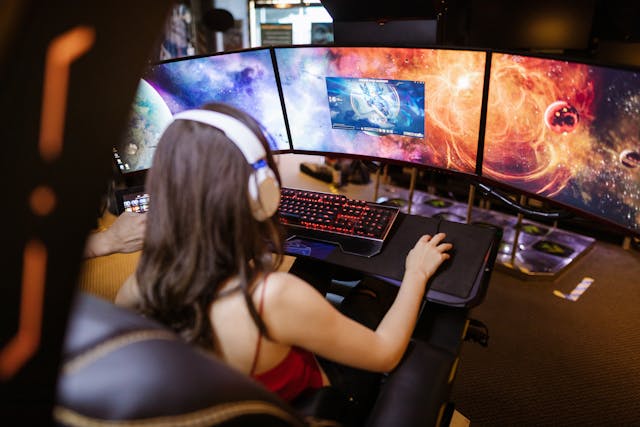
Players can now engage with virtual characters, objects, and environments that seamlessly blend with the real world, offering a level of realism and engagement never before possible.
Interactive Movie and TV Viewing
Augmented Reality technology, combined with AI, has the potential to revolutionize the way we consume video content. Imagine watching a movie or TV show where virtual elements and characters come to life in your living room, creating an interactive and engaging experience that blurs the line between fiction and reality.
Education and Training
AR-based Learning Tools
AI-augmented AR is reshaping the educational landscape by providing powerful learning tools that can create interactive and engaging educational experiences. Students can explore complex concepts, visualize abstract ideas, and interact with virtual simulations, making learning more immersive and effective.
Virtual Simulations for Skill Development
In fields such as healthcare, engineering, and aviation, AR combined with AI can create highly realistic virtual simulations for training purposes. These simulations can replicate real-world scenarios, allowing trainees to practice and develop their skills in a safe and controlled environment.
Retail and Marketing
Virtual Try-On and Product Visualization
AI-powered Augmented Reality is revolutionizing the retail industry by enabling virtual try-on and product visualization experiences.
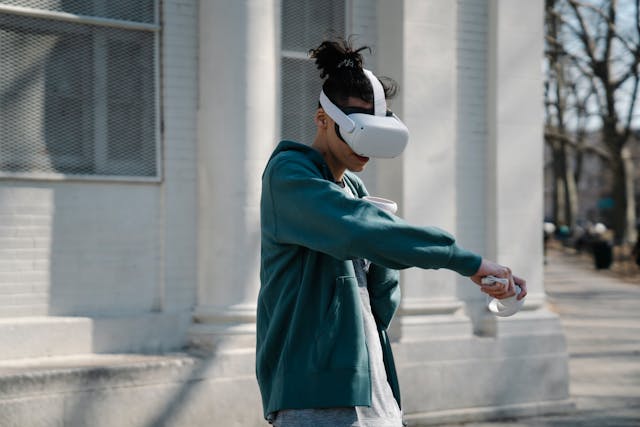
Customers can now see how furniture, clothing, or accessories would look in their environments before making a purchase, leading to more informed decisions and reduced returns.
AR-powered Advertising and Promotional Campaigns
Augmented Reality, combined with AI, offers new and innovative ways for businesses to engage with their customers through immersive advertising and promotional campaigns. By overlaying virtual content in the real world, brands can create interactive and memorable experiences that capture the attention of their target audiences.
Healthcare
Surgical Navigation and Visualization
In the healthcare sector, AI-augmented AR is transforming surgical procedures by providing surgeons with real-time visualization and navigation tools. By overlaying patient data, such as CT scans or MRI images, onto the surgical field, surgeons can better plan and execute complex procedures with increased precision and safety.

Remote Patient Monitoring and Assistance
AR, coupled with AI, can enable remote patient monitoring and assistance, allowing healthcare professionals to provide virtual consultations and guidance to patients in real time. This technology can be particularly useful in telemedicine and remote areas, where access to specialized healthcare services may be limited.
The Future of Artificial Intelligence Augmented Reality
As technology continues to advance, the future of AI-augmented AR holds even more exciting possibilities.
Advancements in 5G and Edge Computing
The roll-out of 5G networks and the rise of edge computing will enable faster data transmission and processing, allowing for more seamless and responsive AR experiences.

With low latency and high bandwidth, AR applications can become more enveloping and reactive, opening up new possibilities for real-time interactions and collaborative experiences.
Integration with Other Emerging Technologies
AI-augmented AR is expected to converge with other emerging technologies, such as the Internet of Things (IoT), robotics, and blockchain. This convergence will enable new use cases and applications, further blurring the lines between the digital and physical worlds.
Potential Impact on Various Industries
As the technology continues to mature and become more accessible, AI-augmented AR is poised to disrupt and transform various industries beyond gaming, entertainment, and retail. Industries such as manufacturing, logistics, architecture, and urban planning are already exploring the potential of this technology to streamline processes, improve efficiency, and enhance decision-making.
Conclusion
The integration of Artificial Intelligence and Augmented Reality is revolutionizing the way we interact with the digital world and our physical surroundings. By combining the power of intelligent machines with the ability to overlay virtual content onto the real world, we are entering an era of truly immersive experiences. From gaming and entertainment to education and healthcare, the applications of AI-augmented AR are vast and far-reaching.
The convergence of Artificial Intelligence and Augmented Reality is a testament to the boundless potential of human ingenuity and the power of technology to shape our future.
As we continue to push the boundaries of what is possible, we can look forward to a world where the lines between the virtual and the real become increasingly blurred, opening up new fields of immersive and transformative experiences.
FAQs
What is the difference between Augmented Reality (AR) and Virtual Reality (VR)?
Augmented Reality (AR) overlays digital information onto the real world, enhancing our perception of the physical environment. Virtual Reality (VR), on the other hand, creates a fully immersive digital environment, completely replacing the user’s view of the real world with a simulated one.
How does Artificial Intelligence (AI) enhance Augmented Reality experiences?
AI plays a crucial role in making AR experiences more intelligent, interactive, and contextually aware. Machine learning algorithms enable computer vision and object recognition, allowing for seamless integration of virtual elements with the real world. Natural Language Processing (NLP) enables voice and text interactions with AR interfaces, while deep learning algorithms help personalize and adapt experiences based on user behavior.
What are some potential applications of AI-augmented AR in the healthcare industry?
AI-augmented AR has several promising applications in healthcare, including surgical navigation and visualization, remote patient monitoring and assistance, and immersive medical training simulations. AR can overlay patient data onto the surgical field, enabling more precise procedures, while AI-powered telemedicine solutions can provide remote consultations and guidance.
How can AI-augmented AR benefit the retail industry?
In the retail industry, AI-augmented AR can enable virtual try-on and product visualization experiences, allowing customers to see how products would look in their environments before making a purchase. AR-powered advertising and promotional campaigns can also create engaging and interactive brand experiences for customers.
What are some potential challenges and considerations with AI-augmented AR?
Some key challenges and considerations include privacy and security concerns, as AR systems capture and process large amounts of data from the real world. User experience and adoption are also crucial factors, as developers must ensure seamless and intuitive AR experiences. Ethical implications regarding potential manipulation, bias, and societal impact must be carefully addressed.





